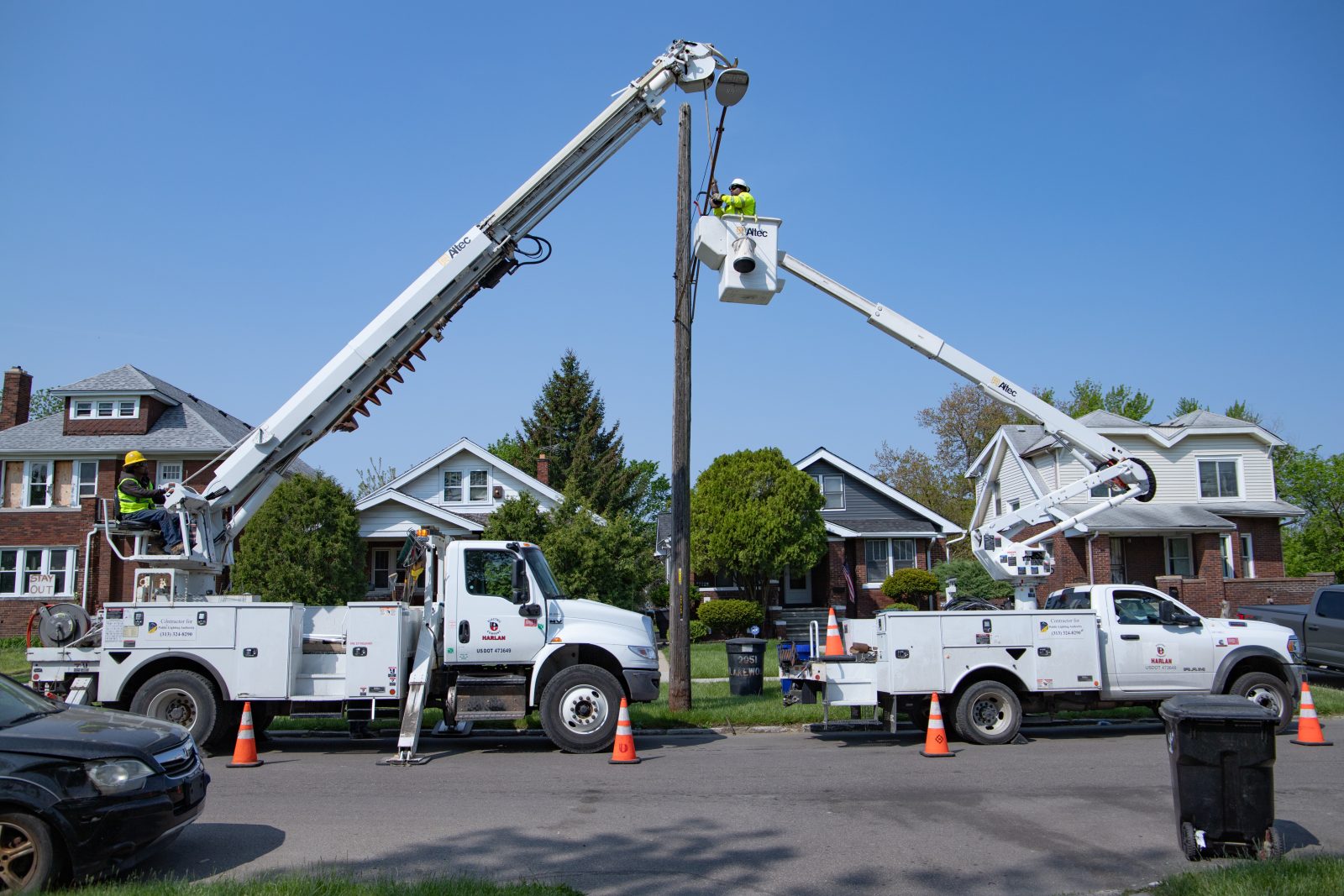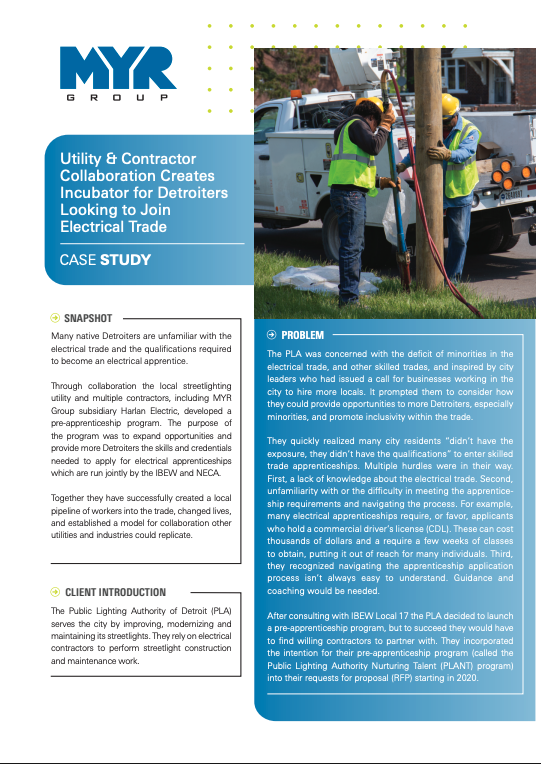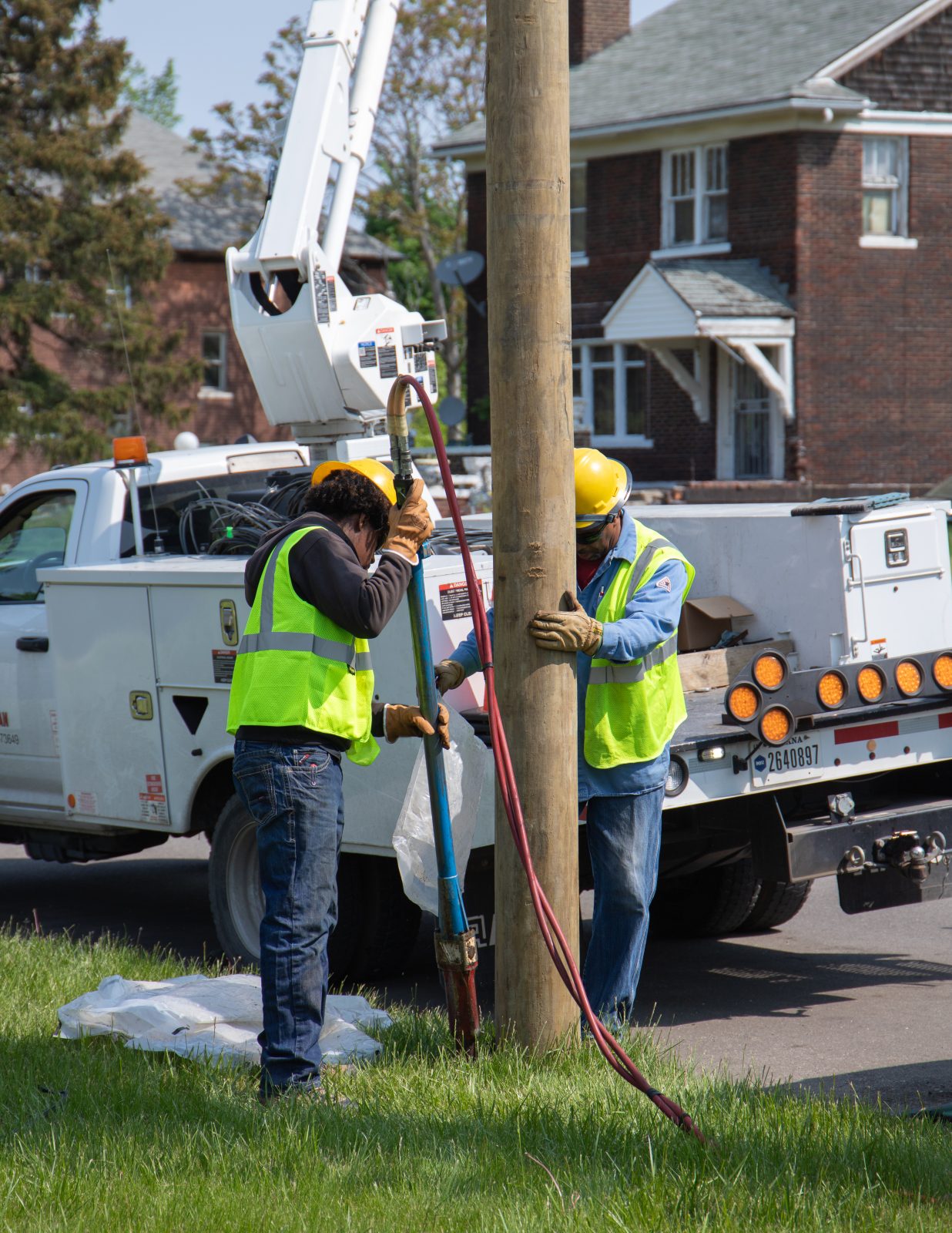
April 30, 2025 Utility and Contractor Collaboration Creates Incubator for Detroiters Looking to Join Electrical Trade
A PROJECT CASE STUDY
SNAPSHOT
Many native Detroiters are unfamiliar with the electrical trade and the qualifications required to become an electrical apprentice.
Through collaboration the local streetlighting utility and multiple contractors, including Harlan Electric, developed a pre-apprenticeship program. The purpose of the program was to expand opportunities and provide more Detroiters the skills and credentials needed to apply for electrical apprenticeships which are run jointly by the IBEW and NECA.
Together they have successfully created a local pipeline of workers into the trade, changed lives, and established a model for collaboration other utilities and industries could replicate.
Download this MYR Group case study

Client Introduction
The Public Lighting Authority of Detroit (PLA) serves the city by improving, modernizing and maintaining its streetlights. They rely on electrical contractors to perform streetlight construction and maintenance work.
PROBLEM

The PLA was concerned with the deficit of minorities in the electrical trade, and other skilled trades, and inspired by city leaders who had issued a call for businesses working in the city to hire more locals. It prompted them to consider how they could provide opportunities to more Detroiters, especially minorities, and promote inclusivity within the trade.
They quickly realized many city residents “didn’t have the exposure, they didn’t have the qualifications” to enter skilled trade apprenticeships.
Multiple hurdles were in their way. First, a lack of knowledge about the electrical trade. Second, unfamiliarity with or the difficulty in meeting the apprenticeship requirements and navigating the process. For example, many electrical apprenticeships require, or favor, applicants who hold a commercial driver’s license (CDL). These can cost thousands of dollars and a require a few weeks of classes to obtain, putting it out of reach for many individuals. Third, they recognized navigating the apprenticeship application process isn’t always easy to understand. Guidance and coaching would be needed.
After consulting with IBEW Local 17 the PLA decided to launch a pre-apprenticeship program, but to succeed they would have to find willing contractors to partner with. They incorporated the intention for their pre-apprenticeship program (called the Public Lighting Authority Nurturing Talent (PLANT) program) into their requests for proposal (RFP) starting in 2020.
SOLUTION
Harlan Electric, an electrical contractor and MYR Group subsidiary, responded enthusiastically to the PLA’s RFP and became the first contractor to embrace the PLANT program. Not only have they helped train PLANT pre-apprentices and prepared them to apply for apprenticeships, they identified resources to improve the program for everyone, including additional contractors who later became involved.
“I can’t even tell you, when we got the RFP, how personally excited I was,” Harlan Electric District Manager Adam Segers said, his passion for the program evident. “It’s probably the best part of my job to give back to the trade and help people in their career.”
Since 2020, PLANT pre-apprentices have worked as groundmen on Harlan Electric’s streetlighting crews to get the training they need to apply for electrical apprenticeships. They gain exposure to overhead and underground streetlight work under the guidance of journeymen lineworkers, working on projects like the restoration of Detroit’s iconic Roosevelt Park. During the pre-apprenticeship, they also complete training critical to apprenticeship success including the OSHA 10, CPR/First Aid and they obtain CDLs.
After participating in the program for about a year, pre-apprentices apply for linework and substation apprenticeships with guidance and support from the contractors they work for.
“[We] coach them through the whole process, from applying to interviewing, to providing a letter of recommendation,” said Segers.
As the partnership developed, Harlan Electric shared industry knowledge with the PLA and found resources to improve the program for everyone – such as CDL grants through the MichiganWorks! Association.
“Harlan Electric has taken the bull by the horns and done much more than what we initially anticipated,” Brooks said, “I’m really happy Adam [Segers] is a part of this because of his knowledge and his insight, he’s helped me grow the program.”
RESULTS
“Our numbers might be small, but the impact is huge,” Brooks said.
Ten of the pre-apprentices have moved into electrical apprenticeships and one is waiting to get in, but the numbers don’t fully capture the results of this unique collaboration. It is changing the lives of people like Brian Birton.
Birton was job hopping and didn’t know what he wanted to do for a career when a friend talked him into joining the PLANT pre-apprenticeship. Now he says he’s “found a home” in the electrical trade.
After the pre-apprenticeship, he applied and became an apprentice in the regional program known as American Line Builders Joint Apprenticeship (ALBAT). He works for Harlan Electric as a first-step apprentice, but even as a pre-apprentice he had become a kind of evangelist for the trade.
“When I’m just out and about, I see young kids and I try to encourage them,” Birton said. “This industry could change your life, and your family’s.”
Stories like that continue to inspire the PLA, Harlan Electric and other contractors who are involved.
“I’m really excited about the people we’ve had go through so far, and I’m excited about the people coming up in the future,” Brooks said. “Just because I believe that we’re learning and making the program better as we go along.”
Conclusion

By working together, the PLA, Local 17, Harlan Electric and others have flipped the script on the apprenticeship process, opened opportunities for Detroiters, and brought new talent into a trade in need of qualified labor.
They’ve also created a model they hope inspires other cities, utilities, industries and skilled trades.
“We can only have about 10 or 12 individuals in our program [at one time], but what we have done, I believe, is created a roadmap for others to follow in different industries and even in similar industries to be able to address the issue of lack of minorities within the skilled trades,” said De’Andre Brooks.
Download this MYR Group case study
